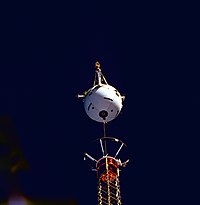
Study of self-oscillations during CO oxidation over Cu foil
Sign Up to like & getrecommendations! Published in 2020 at "Reaction Kinetics, Mechanisms and Catalysis"
DOI: 10.1007/s11144-019-01718-2
Abstract: The oscillatory behavior during CO oxidation over Cu foil has been observed in the temperature range of 350–750 °C. The oscillatory behavior occurred in CO excess similar to the well-known oscillations during CO oxidation over Ni… read more here.
Keywords: self oscillations; oxidation; oscillations oxidation; study self ... See more keywords

Study of the self-imaging and its properties in the crystal of Eu3+:Y2SiO5
Sign Up to like & getrecommendations! Published in 2018 at "Optik"
DOI: 10.1016/j.ijleo.2018.07.035
Abstract: Abstract We report that the electromagnetically induced self-imaging can be realized in an optically dense crystal of Eu3+ doped Y2SiO5. In this paper, the solid medium is driven by the laser beam with transverse distribution,… read more here.
Keywords: crystal eu3; imaging properties; study self; properties crystal ... See more keywords

Numerical study on self-propulsion of a waterjet propelled trimaran
Sign Up to like & getrecommendations! Published in 2020 at "Ocean Engineering"
DOI: 10.1016/j.oceaneng.2019.106655
Abstract: Abstract The hydrodynamics of the waterjet propelled ships represents a challenging problem due to the complexity of the waterjet system itself and the waterjet/hull interaction. In this paper, the self-propulsion computations of a trimaran were… read more here.
Keywords: numerical study; waterjet propelled; self propulsion; study self ... See more keywords

Study of Self-Healing Engineered Cementitious Composites for Durable and Sustainable Infrastructure
Sign Up to like & getrecommendations! Published in 2020 at "Procedia Manufacturing"
DOI: 10.1016/j.promfg.2020.05.002
Abstract: Abstract This research is focused on a characterization of Engineered Cementitious Composites (ECC) with self- healing properties used in infrastructure. Because the demand for concrete increase, developing a material that can regain loss of performance… read more here.
Keywords: healing engineered; infrastructure; study self; self healing ... See more keywords

Computer simulation study on the self-assembly of tethered nanoparticles with tunable shapes
Sign Up to like & getrecommendations! Published in 2019 at "RSC Advances"
DOI: 10.1039/c8ra09635j
Abstract: The self-assembled structures are characterized by the packing of nanoparticles on the micelle surface, and the typical packing mode turns from rectangular (typical for cubes) to hexagonal (typical for spheres). read more here.
Keywords: simulation study; study self; assembly tethered; self assembly ... See more keywords